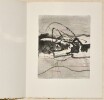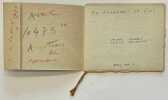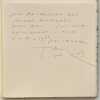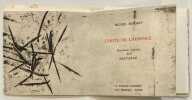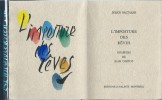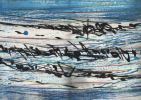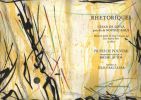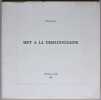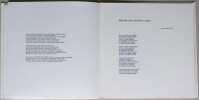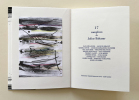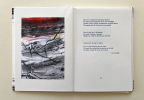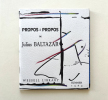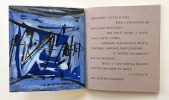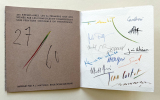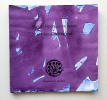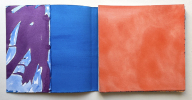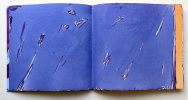1250 books for « julius n h »Edit
-
Type
Book (1242)
Music sheets (9)
New book (2)
-
Latest
Last 24h (1)
Last 3 days (2)
Last month (15)
Last week (2)
-
Language
Dutch (2)
English (4)
French (1171)
German (6)
Greek (1)
Latin (10)
Russian (59)
-
Century
16th (7)
17th (8)
18th (19)
19th (198)
20th (396)
21st (50)
-
Countries
Belgium (130)
Brazil (1)
Canada (4)
Denmark (95)
France (726)
Germany (1)
Greece (3)
Italy (1)
Netherlands (1)
Switzerland (225)
United Kingdom (6)
United States of America (60)
-
Syndicate
ALAC (4)
CLAM (6)
CLAQ (2)
ILAB (637)
NVVA (82)
SLACES (82)
SLAM (373)
SNCAO (1)
Topics
- Alps (22)
- Alsace (7)
- Antarctica (5)
- Archaeology (9)
- Architecture (25)
- Army (12)
- Arrabal (5)
- Astronomy (7)
- Austria (25)
- Autographs (4)
- Belgium (13)
- Biography (5)
- Botany (9)
- Cartography (11)
- Cézanne (4)
- Chemistry (14)
- Children’s books (4)
- China (4)
- Christianity (4)
- Christmas (5)
- Collections (6)
- Comic strip (6)
- Corot camille (6)
- Czechoslovakia (4)
- Dedication (4)
- Detective novels (5)
- Drawings (5)
- Economics (9)
- English (15)
- Esotericism (10)
- Ethnology (9)
- Fascism (5)
- Fine arts (19)
- First edition (18)
- Freemasonry (5)
- Fucik julius (5)
- Geography (9)
- German literature (5)
- Germanic languages (66)
- Germany (21)
- Greek (4)
- Hebraic literature (4)
- Helvética (30)
- Hermeticism (16)
- History (59)
- Hitler (5)
- Hoffmann (7)
- Illustrated books (5)
- Industrial arts & crafts - fine arts (11)
- Italian (4)
- Italy (5)
- Japan (5)
- Latin (17)
- Law (6)
- Linguistics (10)
- Literature (52)
- Mathematics (8)
- Medicine (25)
- Military arts (10)
- Monographs (5)
- Mountaineering climbing (10)
- Museums (4)
- Music (13)
- Painting (5)
- Painting (10)
- Philology (6)
- Philosophy (25)
- Photography (8)
- Physics (7)
- Poetry (11)
- Policy (7)
- Portraits (5)
- Psychology (8)
- Public sale (6)
- Railway (5)
- Religions (15)
- Reliure (4)
- Review (6)
- Russia (8)
- Sachs maurice (9)
- School (4)
- Schutz (8)
- Sciences (15)
- Scores (16)
- Sculpture (6)
- Songs (6)
- Spying (5)
- Switzerland (21)
- Symbolism (15)
- Technology (10)
- Theatre (13)
- Theology (8)
- Travel (6)
- United states (6)
- Various (14)
- Venice (4)
- Wagner richard (7)
- War (19)
- Yoga (5)
- Zurich (4)
The Great Exhibition in Art. Picturing the First World's Fair, 1851.
Bryant, Julius: The Great Exhibition in Art. Picturing the First World's Fair, 1851. 2025. 160 pages, 150 colour and black & white illustrations. Hardback. 27 x 22.8cms. A study of The Great Exhibition of 1851. Drawing on the V&A's collections to document Prince Albert's vision for the Exhibition alongside the planned and actual routes as recorded in official engravings, maps and guidebooks; the opening and closing ceremonies as depicted in prints; the official visual record of the Exhibition; and souvenirs, popular press and ephemera. Bringing to life the 19th-century visitor's experience through reproductions of period images from definitive official publications, commercial guides, souvenirs, music scores, poems and satirical periodicals. Including the story of the founding of the Victoria and Albert Museum which shared the Exhibition's mission to educate the public about art, design and taste.
A study of The Great Exhibition of 1851. Drawing on the V&A's collections to document Prince Albertâs vision for the Exhibition alongside the planned and actual routes as recorded in official engravings, maps and guidebooks; the opening and closing ceremonies as depicted in prints; the official visual record of the Exhibition; and souvenirs, popular press and ephemera. Bringing to life the 19th-century visitorâs experience through reproductions of period images from definitive official publications, commercial guides, souvenirs, music scores, poems and satirical periodicals. Including the story of the founding of the Victoria and Albert Museum which shared the Exhibition's mission to educate the public about art, design and taste
[Sir Peter Paul Rubens] - Held, Julius S.
Reference : 031790
(1980)
ISBN : 0691039291
The Oil Sketches of Peter Paul Rubens. A critical catalogue. 2 volumes
Held, Julius S.: The Oil Sketches of Peter Paul Rubens. A critical catalogue. 2 volumes. 1980. Princeton University Press for the National Gallery of Art. Volume 1: xv, 752 pages, and 71 black & white illustrations. Volume 2: xv, 24 colour and 504 black & white illustrations. Cloth. 29 x 27.5cms.
Sammlung Lanna, Prag. Vol. 1
Leisching, Julius: Sammlung Lanna, Prag. Vol. 1. 1909. 142 pages, illustrations in black and white and some colour plates. Hardback. 28.8 X 36cms. Text in German.
Text in German
[Julius Baltazar] - BENOIT, Pierre André - BALTAZAR, Julius - WATSKY, Joshua
Reference : 2139
(2016)
5 POÈMES, Pierre-André Benoit - 5 ENCRES ORIGINALES, Julius Baltazar (2016)
Wequetecock Cove - New-Haven, 2016. Un volume in-16 (10 x 11,5 cm) composé de 5 "leporellos" sous chemises de papier vergé vert titrées et numérotées de 1 à 5 sur le front, celles-ci conservées sous une chemise de même papier rempliée et fermée par un "rond de serviette" de papier vert imprimé titrée. Édition originale de cinq poèmes de Pierre-André Benoit, chacun sous forme de leporello indépendant, enluminés par Julius Baltazar de compositions à l'encre de Chine, aux encres et aux crayons de couleur. Chaque poème est accompagné de sa version américaine : 1. Aurore/Dawn, 2. L'injure/The insult, 3. Je me sens triste/I feel sad, 4. Mortel/Mortal, 5. Aigreur/Bitterness. La traduction est de Joshua Watsky. L'impression du texte est due à François Huin, typographe à L'Hay-Les-Roses. Tirage à 45 exemplaires, tous différents, numérotés et signés par le peintre. Chacun des opuscules est justifié et signé. Une conception éditoriale ludique et d'un grand raffinement artistique. Catalogue de référence : Julius Baltazar un Rimbaud déguisé en cosmonaute, Ville d'Angers 2019, L56, page 108 avec illustration. -- ENGLISH DESCRIPTION: Wequetecock Cove - New-Haven, 2016. One volume in-16 (10 x 11.5 cm) composed of 5 "leporellos" in folders of green laid paper titled and numbered from 1 to 5 on the front, these kept under a folder of the same paper filled and closed by a "napkin ring" of titled printed green paper. First edition of five poems by Pierre-André Benoit, each in the form of an independent leporello, illuminated by Julius Baltazar with original compositions in India ink, inks and colored pencils. Each poem is accompanied by its American version: 1. Aurore/Dawn, 2. L'injure/The insult, 3. Je me sens triste/I feel sad, 4. Mortel/Mortal, 5. Aigreur/Bitterness. The translation is by Joshua Watsky. The printing of the text is due to François Huin, typographer at L'Hay-Les-Roses. . Edition of 45 copies, each different, numbered and signed by the painter. Each of the booklets is justified and signed. A playful editorial concept of great artistic refinement. Reference catalog: Julius Baltazar "un Rimbaud disguised as a cosmonaut", City of Angers 2019, L56, page 108 with reproduction.
Une conception éditoriale ludique et d'un grand raffinement artistique. Catalogue de référence : Julius Baltazar un Rimbaud déguisé en cosmonaute, Ville d'Angers 2019, L56, page 108 avec illustration. A playful editorial concept of great artistic refinement. Reference catalog: Julius Baltazar "un Rimbaud disguised as a cosmonaut", City of Angers 2019, L56, page 108 with reproduction. Parfait état.
Livres manuscrits, imprimés gravés et peints 1975-1986.
Bruxelles, Bibliotheca Wittockiana, 1986. In-8 oblong (200 x 230 mm), 2 ff. bl., 84 pp., 2 ff. n. ch. Couverture illustrée, très légers frottements.
Édition originale de cet important catalogue raisonné. Il s’agit de la première rétrospective consacrée à l’œuvre bibliophilique du peintre et graveur Julius Baltazar, avec des textes de Fernando Arrabal, Michel Wittock, Michel Butor, Lucien Scheler, Michel Déon, Kenneth White… Préfacé par Antoine Coron, conservateur à la Bibliothèque nationale, l’ouvrage décrit les 156 livres manuscrits et imprimés auxquels l’artiste avait participé jusque là. Il contient en outre une biographie, la liste des expositions personnelles, des principales expositions collectives et des collections publiques in-fine. L’illustration se compose de 24 reproductions de couvertures, pages de titre et frontispices ainsi qu’une photographie de l’artiste à côté de son vélo. «Tendant vers une signification culturelle plus large et pluraliste, la bibliophilie d’aujourd’hui se doit d’être à l’avant-garde de l’art sous toutes ses formes. C’est dans cet esprit de renouveau que la Bibliotheca Wittockiana veut célébrer la poétique du livre moderne à travers le talent d’un jeune peintre français.» Une figure majeure du livre d’artiste en France. Élève de l’école buissonnière, Hervé Lambion dit Julius Baltazar (né à Paris en 1949) fit en 1967 la rencontre déterminante de Salvador Dalí qui le baptisa d’un nom surréaliste et l’introduisit dans les cercles artistiques et littéraires. Il le présenta entre autres à Fernando Arrabal, pour lequel Baltazar réalisa sa première gravure sur zinc (Huevo filosofico, 1967) et avec qui il fonda l’éphémère mouvement « intra-réaliste». Après un détour comme bijoutier chez Arthus-Bertrand (c’était sa formation), il se lia d’amitié avec le peintre Pierre Dmitrienko, rencontra Raoul Ubac, le galeriste André Biren et l’éditeur niçois Jacques Matarasso. C’est à cette période, au milieu des années 1970, que Baltazar commença à réaliser ses premiers livres peints et manuscrits, début d’une collaboration fructueuse avec des écrivains et des poètes contemporains au premier rang desquels Michel Butor, son compagnon de route durant trente ans. Une seconde rétrospective consacrée à l’œuvre de Julius Baltazar eut lieu à la Bibliotheca Wittockiana à Bruxelles en 1997, suivie de plusieurs expositions dans les institutions françaises. La dernière en date, Hugologie, Julius Baltazar et Michel Butor, s’est tenue à la Maison Victor Hugo à l’hiver 2015-2016. Exemplaire exceptionnellement enrichi d’un envoi de Julius Baltazar à Paul Culot accompagné d’une belle composition originale à pleine page rehaussée au crayon arlequin, sur la page de faux-titre: «Vive la Belgique! Vive le Roi! Donc voix-ci pour vous pour Paul Culot ce recuerdo franco-belge hé amical. Baltazar 1988», qui se poursuit sur la page de titre: «Et surtout viva! Paul Culot (à suivre)», avec une seconde composition originale à pleine page. Éminent spécialiste de la reliure française et belge, Paul Culot (Malmédy, 1931–Uccle, 2017) fut bibliothécaire au Musée royal de Mariemont, assistant à la Bibliothèque royale de Belgique et membre du comité scientifique de la Bibliotheca Wittockiana. Bon exemplaire orné d’un précieux témoignage d’amitié de l’artiste.
Quatre fois son portrait dans les États-Unis d'Amérique. Deux encres originales et 4 gravures rehaussées de Julius Baltazar (2012)
Éditions Wequetecock Cove 2012-Stonington. 1 volume in-folio en feuilles, 8 bifolios, sous couverture rempliée entièrement peinte par l'artiste. Édition originale des quatre poèmes de James Sacré présentant au recto de chaque double feuillet le texte en français imprimé en noir et au verso la traduction en anglais par Joshua Watsky. Julius Baltazar a illustré l'édition ainsi : - La couverture, entièrement peinte à l'encre bleue et rehaussée au crayon arlequin de larges stries horizontales. - En frontispice une composition à l'encre et à l'aquarelle sur une feuille de papier japon pelure contrecollée. - Quatre gravures en hors-texte en regard de chaque poème. Ces gravures sont rehaussées par l'artiste au pinceau et au crayon arlequin. Tirage unique à 30 exemplaires sur vélin d'Arches. Celui-ci le n° 1 ! Catalogue de référence : Julius Baltazar un Rimbaud déguisé en cosmonaute, Ville d'Angers 2019, L218, page 172 avec illustration. - ENGLISH DESCRIPTION: Wequetecock Cove 2012-Stonington. 1 folio volume in sheets, 8 bifolios, under folded cover entirely painted by the artist. First edition of the four poems by James Sacré with the French text printed in black on the front of each double leaf and the English translation by Joshua Watsky on the back side. Julius Baltazar illustrated the edition thus: - The cover, entirely painted in blue ink and enhanced with harlequin pencil with large horizontal streaks. - On the frontispiece, a composition in ink and watercolor on a sheet of laminated Japanese skin paper. - Four inset engravings next to each poem. These engravings are enhanced by the artist with a brush and harlequin pencil. Unique edition of 30 copies on Arches vellum. This one the number 1! Reference catalog: Julius Baltazar "un Rimbaud disguised as a cosmonaut", City of Angers 2019, L218, page 172 with reproduction.
[J.P. Migne] - Gregorius Thaumaturgus ; Zephyrinus ; Sextus Iulius Africanus; Urbanus I ; Hippolytus Romanus ; Theognostus Alexandrinus ; (Grégoire le Thaumaturge, Zéphyrin, Sextus Julius Africanus, Urbain Ier, Hippolyte de Rome, etc. ; Gregory Thaumaturgus, Pope Zephyrinus, Sextus Julius Africanus, Pope Urban I, Hippolytus of Rome, Theognostus of Alexandria, etc.)
Reference : 68668
(1857)
S.P.N. Gregorii, cognomento Thaumaturgi, Opera quae reperiri potuerunt omnia. Accedunt S. Zephirini, S. Callisti, S. Urbani I, Pontiani, Anteri, S. Fabiano, Pontificum Romanorum, etc.. (1 Tome - Complet). Patrologiae Cursus completus. Series Graeca. Tomus X [ Patrologia Graeca Tome 10 - Saint Irénée de Lyon ]
Studio et Labore Domni Renati Massueti, Accurante et recognoscente J.P. Migne, 1 vol. in-4 reliure de l'époque demi-chagrin vert, dos à 4 nerfs dorés, Apud J.P. Migne, Petit-Montrouge, 1857, 1620 colonnes Rappel du Titre complet : S.P.N. Gregorii, cognomento Thaumaturgi, Opera quae reperiri potuerunt omnia. Accedunt S. Zephirini, S. Callisti, S. Urbani I, Pontiani, Anteri, S. Fabiano, Pontificum Romanorum, etc.. (1 Tome - Complet). Patrologiae Cursus completus. Series Graeca. Tomus X [ Patrologia Graeca Tome 10 - Saint Irénée de Lyon ]
Rare exemplaire en bon état, bien relié, du tome 10 de la Patrologie grecque de Migne, bien complet des oeuvres de Saint Grégoire le Thaumaturge, Saint Zéphyrin, Sextus Julius Africanus, Urbain Ier, Hippolyte de Rome, etc.. Avec le texte grec et la traduction latine en regard (coupes très lég. frottées, ancien cachet de monastère, petite usure à un mors en tête, rares rouss., très bon état par ailleurs). Peu commun, surtout en si bon état. A rare, well-bound, and in good condition copy of Volume 10 of Migne's Greek Patrology, complete with the Works of Gregory Thaumaturgus, Pope Zephyrinus, Sextus Julius Africanus, Pope Urban I, Hippolytus of Rome, Theognostus of Alexandria. With the Greek text and the Latin translation opposite.
Livres manuscrits, imprimés gravés et peints 1975-1986.
Bruxelles, Bibliotheca Wittockiana, 1986. In-8 oblong (200 x 230 mm), 1 f. bl., 84 pp., 2 ff. n. ch., 1 f. bl. Reliure souple en cuir fauve, gravure et titre estampés sur le plat supérieur, couture à la japonaise, couvertures illustrées conservées (reliure de l’éditeur).
Édition originale de cet important catalogue raisonné. Il s’agit de la première rétrospective consacrée à l’œuvre bibliophilique du peintre et graveur Julius Baltazar, avec des textes de Fernando Arrabal, Michel Wittock, Michel Butor, Lucien Scheler, Michel Déon, Kenneth White… Préfacé par Antoine Coron, conservateur à la Bibliothèque nationale, l’ouvrage décrit les 156 livres manuscrits et imprimés auxquels l’artiste avait participé jusque là. Il contient en outre une biographie, la liste des expositions personnelles, des principales expositions collectives et des collections publiques in-fine. L’illustration se compose de 24 reproductions de couvertures, pages de titre et frontispices ainsi qu’une photographie de l’artiste à côté de son vélo. «Tendant vers une signification culturelle plus large et pluraliste, la bibliophilie d’aujourd’hui se doit d’être à l’avant-garde de l’art sous toutes ses formes. C’est dans cet esprit de renouveau que la Bibliotheca Wittockiana veut célébrer la poétique du livre moderne à travers le talent d’un jeune peintre français.» Un des 60 exemplaires de tête (n°12), enrichi d’un lavis original de Baltazar en regard de la page de titre et signé au colophon «par tous les complices, auteur chacun d’un texte inédit» pour le catalogue. Chaque contributeur a pris soin de signer d’une couleur différente. Une figure majeure du livre d’artiste en France. Élève de l’école buissonnière, Hervé Lambion dit Julius Baltazar (né à Paris en 1949) fit en 1967 la rencontre déterminante de Salvador Dalí qui le baptisa d’un nom surréaliste et l’introduisit dans les cercles artistiques et littéraires. Il le présenta entre autres à Fernando Arrabal, pour lequel Baltazar réalisa sa première gravure sur zinc (Huevo filosofico, 1967) et avec qui il fonda l’éphémère mouvement « intra-réaliste». Après un détour comme bijoutier chez Arthus-Bertrand (c’était sa formation), il se lia d’amitié avec le peintre Pierre Dmitrienko, rencontra Raoul Ubac, le galeriste André Biren et l’éditeur niçois Jacques Matarasso. C’est à cette période, au milieu des années 1970, que Baltazar commença à réaliser ses premiers livres peints et manuscrits, début d’une collaboration fructueuse avec des écrivains et des poètes contemporains au premier rang desquels Michel Butor, son compagnon de route durant trente ans. Une seconde rétrospective consacrée à l’œuvre de Julius Baltazar eut lieu à la Bibliotheca Wittockiana à Bruxelles en 1997, suivie de plusieurs expositions dans les institutions françaises. La dernière en date, Hugologie, Julius Baltazar et Michel Butor, s’est tenue à la Maison Victor Hugo à l’hiver 2015-2016. Les exemplaires de tête ont été reliés en cuir fauve par Bernard Duval et décorés sur le premier plat d’une gravure inédite de l’artiste estampée par Alain Piroir, taille-doucier à Lyon. Bel exemplaire.
Maîtres de l'Affiche : Pl. 3. Julius PRICE An Artists Model
paris Imprimerie Chaix 1895 Une Affichette Publicitaire [Fac-similé réduit de l'affiche originale], lithographiée en couleurs, format : 40 x 29 cm, Signé en bas à droite : Julius PRICE, Timbre sec dans le coin inférieur droit : "Les Maîtres de l'affiche // Imprimerie Chaix", 1895 [Paris] : Les Maîtres de l'Affiche Editeur,
Édition : [Fac-similé réduit de l'affiche originale], Note : Source : Affiche originale de l'imprimerie de : PAUL DUPONT Paris ......... SUPERBE .................. en trés bon état (very good condition). en trés bon état
Bidrag til et thermochemisk System [Contributions to a Thermochemical System]. (Særskilt aftrykt af det Kgl. Danske Videnskabernes Selskabs Skrifter, 5te Række, naturvidenskabelig og Matematisk Afdeling, 3die Bind.). - [THE THERMOCHEMICAL AFFINITY PRINCIPLE]
Kjöbenhavn (Copenhagen), 1852. 4to. Uncut and unopened in the original blue boards (""hollanderet""). A very fine, fresh, and clean copy - near mint, with only a bit of minor sunning to boards. 51 pp.
First edition, off-print, of the seminal paper that contains the first enunciation of the thermochemical affinity principle and the introduction of the term ""varmetoning"". The present paper represents Thomsen's main work as well as the ""(to use Oswald's words) scientific creed of the chemist for the next half-century. It constituted the only method by which chemists could predict the course of chemical reactions, and Thomsen himself employed the theory in various ways to carry out calculations of this kind."" (Brøndsted in: Meisen edt., Prominent Danish Scientists Through the Ages, p. 143). This breakthrough work, which contains the first statement of a thermochemical nomenclatura and the first definition and presentation of the thermochemical affinity principle, inaugurated a several decades long period of thermochemical studies, during which Thomsen personally carried out more than 3,500 calorimetric measurements in a room kept at 18 degrees celcius. His fundamental thought was that the evolution of heat accompanying a chemical reaction (""varmetoning"") is an exact expression of the chemical affinity of the reaction. Bethelot reached many of the same conclusions a bit later and advanced a theory that in essence was the same as Thomsen's. This led to heated discussions that continued for several years between the two scientists. Thomsen's principle is now usually known as the Thomsen-Berthelot-Principle. In 1883, the Davy Medal was awarded in duplicate, to ""M. Marcellin Berthelot, Member of the Institute of France, and Foreign Member of the Royal Society, and Prof. Julius Thomsen, of Copenhagen"", although Berthelot was obviously preceded by Thomsen. ""The importance of Thomsen's scientific work was rapidly recognized in both Denmark and abroad. In 1860 he was elected member of the Royal Danish Academy of Sciences and Letters. Nine years later he was nominated as professor of physical chemistry at the University of Leipzig, but he refused the offer. Many foreign scientists asked to work under his guidance, but he was afraid that the comparability of the results obtained would be endangered when more than one person performed such measurements and therefore refused all such requests. Thus no school was formed around him. Thomsen was a foreign member of various academies and honorary member of learned societies, and held honorary doctorates from several universities (but not in France, because of the conflict with Berthelot)."" (D.S.B. XIII:359).""Julius Thomsen's international reputation is due largely to his thermochemical studies. He began to work on thermochemical problems in 1850, and in 1852 he published in the ""Videnskabernes Selskabs Skrifter"" a paper entitled ""Bidrag til et thermochemisk System"" [""Contributions to a thermochemical System""], in which he outlined the scheme of his subsequent thorough investigations in this field. This paper contains the first enunciation of the thermochemical affinity principle, which states that chemical affinity, or the attraction between substances, can be measured by the heat evolved when they combine.Ideas as to the nature and laws of chemical affinity were by no means lacking at this period, but the prevalent views were vague, hypothetical and mutually irreconcilable. The great importance of Julius Thomsen's principle when compared with earlier speculations lies not only in its fundamental theoretical ideas, which associate chemical and mechanical phenomena, but also in the fact that the conception of affinity is related to a measurable quantity, the ""Varmetoning"" - a term which Julius Thomsen introduced to include both evolution and absorption of heat - and thus is easily accessible to experimental investigation."" (Brøndsted in: Meisen edt., Prominent Danish Scientists Through the Ages, p. 143).
Deutsche Skulptur Der Gothik - Julius Böhler 1880-1980
Julius Böhler, München, 1980. In-8, reliure pleine toile éditeur, titre doré sur le plat supérieur, 62 pp. Vorwort, Julius G. Böhler - Katalog [26 n°].
Avec 26 planches en noir et blanc en hors texte.Un ex-libris collé au revers du plat supérieur. --- Plus d'informations sur le site archivesdunord.com
Phone number : 01 42 73 13 41
Julius Shulman - Agenda vierge pour l'année 2000.
Köln, Taschen Diary, 1999, 1 vol. in-8 (220 x 175) cahiers réunis par une spirale en métal, couverture illustrée d'une photographie en noir et blanc protégée par une feuille en plastique opaque titrée en rouge. Pas de photo en plat inférieur, normal ?
Couverture, 43 photographies en noir et blanc et 14 en couleurs, reproduites à pleine page de Julius Shulman. Magnifique. "Julius Shulman est un photographe américain né le 10 octobre 1910 à New York et mort le 15 juillet 2009 à Los Angeles. Il est reconnu pour son travail en tant que photographe d'architecture et a, en particulier travaillé, avec quelques uns des architectes californiens les plus renommés comme Gregory Ain, John Lautner, Richard Neutra, Pierre Koenig ou Rudolf Schindler". (Sources Wikipédia).
De Germaansche volken bij Julius Honorius en anderen.
Amst., Müller, 1895.
4to. 39 p., folding map. Wrappers. (Verh. K(N)AW)(Saec. IV/V; on the cosmographia of Julius H.: KP. II, p. 1550; RE Julius 277)
SOLEIL SUR LA DUNE. Gravure originale.
1992 Sans lieu ni nom d'éditeur, 1992. Un feuillet double (283 X 224 mm). Infimes taches de rousseurs dans les barbes.
GRAVURE ORIGINALE REHAUSSÉE À LA MAIN PAR L'ARTISTE (18,5 X 15 cm environ), à pleine page sur un feuillet double de vélin d'Arches à la forme, non signée par l'artiste. Peintre, graveur et illustrateur français, Julius BALTAZAR (né en 1949) fut proche de Salvador dali et Pierre Dmitrienko. Le support est celui d'une carte de voeux (1992) de la maison Prouté, l'une des plus anciennes galeries d'art françaises, avec ENVOI AUTOGRAPHE SIGNÉ des époux Prouté sur la première page : « Merci, chère Sylvine, de vos voeux affectueux et de votre gentille pensée, Vous étiez très bien l'autre soir, nous espèrons de tout coeur que la nouvelle année vous sera très favorable. Fidèlement et affectueusement, Michèle et Hubert ». TRÈS BELLE ÉPREUVE, en PARFAIT ÉTAT. FINE COPY. PICTURES AND MORE DETAILS ON REQUEST.


Phone number : 06 21 78 12 79
ROMANISCHE BAUKUNST IN FRANKREICH,
, Stuttgart, Julius Hoffmann, 1950, Original Leinen, 230 x 300mm., 232 Seiten, zahlreiche s/w Abbildungen auf Tafeln.
Bauformen-Bibliothek Dritter Band. Guter Zustand.
En regardant le ciel.
1982 Paris. 1982. 1 plaquette in-16 oblong, reliée par un cordon de laine brun, couverture de papier fort à rabats illustrée d'un collage. (6) ff.
Edition originale de ce texte de Michel Bohbot, illustrée d’une gravure hors-texte en noir rehaussée de Julius Baltazar.Tirage limité à 9 exemplaires, tous manuscrits, numérotés et signés par l’auteur et l’illustrateur.Exemplaire de Madeleine et Jacques Matarasso, enrichi d'un envoi autographe signé de Julius Baltazar au crayon de couleurs sur la 1ère et 2ème de couverture : « Pour les amis M. and J. Matarasso… Amities de Baltazar».Julius Baltazar collaborera plusieurs années avec Jacques Matarasso, célèbre libraire parisien puis niçois, pilier moteur de l’Ecole de Nice.
L’hôte de l’absence.
1983 Paris. Luc Moreau. 1983. 1 volume in-12 carré, sous couverture rempliée et illustrée, chemise et étui de toile beige. (1) f. bl. ; (14) ff. ; (1) f. bl.
Edition originale de Michel Bohbot, illustrée de 7 eaux-fortes originales sur double page, de Julius Baltazar, dont la couverture.Préface de F. Arrabal. Tirage limité à 72 exemplaires signés par Bohbot, Baltazar et Arrabal. 1 des 10 exemplaires de tête, comprenant une suite sur Japon signée des 6 gravures in-texte.Envoi autographe signé de Julius Baltazar et Arrabal à Madeleine et Jacques Matarasso : « Pour Ma-deleine and Jacques Matarasso mes amis …Nice... XI-XII-1982. Baltazar. J. Arrabal (…pour la vie) ». Hervé Lambion, de son nom d'artiste Julius Baltazar, collaborera plusieurs années avec Jacques Matarasso, pilier moteur de l’Ecole de Nice, et rencontrera Fernando Arrabal, poète engagé, par l’intermédiaire de Salvador Dali.Volume 8 de la collection « A parole donnée ».
Julius Baltazar
Les 400 coups | Québec 2000 | 22.50 x 28 cm | broché
Edition originale. Textes de Fernando Arrabal, Michel Butor, Michel Déon, Luis Mizon, Eugène Guillevic, Kenneth White... Ouvrage illustré de reproductions d'oeuvres de Julius Baltazar. Notre exemplaire est exceptionnellement enrichi d'un envoi autographe daté et signé de Julius Baltazar au professeur Jean-Philippe Méry accompagné d'un dessin original. - Photographies et détails sur www.Edition-Originale.com -


Phone number : 01 56 08 08 85
L’imposture des rêves, avec des graphies de Jean Cortot. ( Tirage unique à 50 exemplaires numérotés sur papier vélin gris à la forme signés par Julius Baltazar et Jean Cortot ).
Editions La Palinte-Montréal 1996. In-12 en feuilles non paginé au format 15.5 x 12 cm. Superbe couverture typographique. Dos, plats et intérieur parfaits. Seule la graphie, de Jean Cortot située en frontispice, est rehaussée d’aquarelle. Recueil de pensées, préceptes, paradoxes…par Julius Baltazar, ornées de graphies de Jean Cortot. Tirage unique à 50 exemplaires numérotés sur papier vélin gris à la forme ( n° 5 ), signés par Julius Baltazar et Jean Cortot. Rare édition originale en état proche du neuf.
Vente exclusivement par correspondance. Le libraire ne reçoit, exceptionnellement que sur rendez-vous. Il est préférable de téléphoner avant tout déplacement.Forfait de port pour un livre 8,50 €, sauf si épaisseur supérieure à 3 cm ou valeur supérieure ou égale à 100 €, dans ce cas expédition obligatoire au tarif Colissimo en vigueur. A partir de 2 livres envoi en colissimo obligatoire. Port à la charge de l'acheteur pour le reste du monde.Les Chèques ne sont plus acceptés.Pour destinations extra-planétaire s'adresser à la NASA.Membre du Syndicat Lusitanien Amateurs Morues
SCEVA (César de, petit-fils de Nostradamus), BUTOR (Michel). BALTAZAR (Julius).
Reference : 23184
(2010)
Rhétoriques de César de Sceva. Prises de pouvoir, interprétation poétique de Michel Butor.
Compagnie des Pharmaciens Bibliophiles 2010 1 in-folio Paris, Compagnie des Pharmaciens Bibliophiles, 2010,fort volume petit in-folio, en feuilles, sous couverture rempliée en couleurs, sous emboîtage cartonné havane.
Rhétoriques, extraits publiés pour la première fois par la compagnie des Pharmaciens Bibliophiles pour leur quarantième ouvrage. Ce texte a été repris dans la langue du XVIIe siècle tel que dans le manuscrit de César de Sceva de Nostradamus. Prises de pouvoir de Michel Butor est accompagnée de 19 gravures sur cuivre, en taille douce en couleur, toutes gravées et rehaussées au crayon arlequin par Julius Baltazar. Tirage limité à 150 exemplaires sur vélin d'Arches 250g. Un des 120 exemplaires nominatifs, numérotés et signés par Michel Butor et Julius Baltazar. Chaque exemplaire est accompagné d'un fac-similé de la "Rhétorique des Larmes" réalisé par Bruno Jacomet sur les presses Della Casa à Avignon et d'une ligne de plomb ayant servi à l'impression, prise au hasard du texte. Joint le menu tiré à 150 exemplaires numérotés. Gravure sur cuivre de Julius Baltazar (N°55/150). Très légères usures à l'emboîtage.
Partition de la chanson : Rire et chanter c'est la santé Julius Trois titres sans accompagnement mais sur des airs connus : - Ma femme a trépassé - Drôles de rêves - Le temps des chemises
Propriété de L'Auteur
Content d'être soldat,Nous étions sept !,Employé de la petite vitesse (L') Bon état Petit format
[Julius Baltazar] - Butor, Michel - Baltazar, Julius (ill.)
Reference : 5015
(1982)
Sept à la demi-douzaine
Sl Lettres de Casse 1982 petit in-4 en feuilles Sl, Lettres de Casse, 1982. 22,5 x 22,5 cm, petit in-4, 14 ff. n. ch. dont 2 blancs et 1 planche gravée hors texte, en feuilles sous couverture blanche à rabats imprimée.
Edition originale tirée à 199 exemplaires tous sur vélin d'Arches. Celui-ci exemplaire hors commerce comportant, comme les 20 premiers exemplaires, une gravure de Julius Baltazar signée, justifiée HC. Des rousseurs touchant essentiellement la couverture, les tranches et les derniers feuillets. Bon
[Julius Baltazar] - BALTAZAR, Julius - Michel Butor, Georges-Emmanuel Clancier, Luis Mizon, Yves Peyré, Lionel Ray, Guy Goffette, Pierre Oster, etc.
Reference : 2155
(2006)
17 complices de Julius Baltazar.
Éditions Wequetecock Cove - New-Haven, 2006. Un volume in-8 (23 x 15,4 cm), 40 pages, en feuilles sous couverture rempliée, imprimée. Anthologie inédite de propos et réflexions autour de l'art de Julius Baltazar mais aussi des liens d'amitiés qui lient ces artistes entre eux. 4 LITHOGRAPHIES EN COULEURS DE BALTAZAR contrecollées en hors-texte. L'impression du texte est due à François Huin, typographe à L'Hay-Les-Roses. Édition originale tirée à 49 exemplaires sur vélin d'Arches, celui-ci le n° 5 est signé par Baltazar et les 17 auteurs "complices" au crayon ou à l'encre.
Catalogue de référence : Julius Baltazar, un Rimbaud déguisé en cosmonaute, Ville d'Angers 2019, L13, page 91 avec illustration.
[Julius Baltazar] - BALTAZAR, Julius - F. ARRABAL, A.BERENGUER, J. CORTOT, B. DORNY,P JENKINS, A SAURA, K WHITE
Reference : 2142
(1989)
PROPOS à PROPOS de Julius BALTAZAR.
Wessell Library, 1989. Un vol in-12 carré (15 x 13 cm), 20 pages, couverture imprimée et rehaussée de couleur. Édition originale des texte de F. ARRABAL, A.BERENGUER, J. CORTOT, B. DORNY,P JENKINS, A SAURA, K WHITE et M. DÉON, E. GUILLEVIC, L. MUIZON, M. SICARD dont les manuscrits ou tapuscrits sont reproduits au cliché. 3 encres de Julius Baltazar sont reproduites à pleine page. Tirage à 300 ex. sur vergé teinté. Parmi ceux-ci, 60 exemplaires sont accompagnés d'une peinture originale sur toile au format du livre (15 x 13 cm) signée. Le nôtre, l'ex. n° 27/60 est également signé par chaque intervenant "complice" à l'exception de Paul Jenkins sur un feuillet blanc format en soi une superbe composition originale polychrome.
Catalogue de référence : Julius Baltazar, un Rimbaud déguisé en cosmonaute, Ville d'Angers 2019, L6, page 88 avec illustration.
[Julius Baltazar] - RAY, Lionel - BALTAZAR, Julius - WATSKY, Joshua
Reference : 2140
(2016)
OBSCURE DENTELLE DU TEMPS * LACE SHROUDED IN TIME
Wequetecock Cove - New-Haven, 2015. Un volume in-folio carré (25x25 cm), en feuilles sous couverture à rabats entièrement peinte par l'artiste et titrée. Édition originale de cinq poèmes de Lionel Ray, chacun sous forme de triptyque dépliant, enluminés par Julius Baltazar de compositions à l'encre de Chine et aux crayons de couleur, le recto titré étant entièrement recouvert d'une composition abstraite originale aux encres de couleur. Chaque poème est accompagné de sa version américaine : 1. Vieil homme/Old Man, 2. Veillée/Vigil, 3. Villages/Villages, 4. Une voix/A Voice, 5. Le Temps/Time. La traduction est de Joshua Watsky. L'impression du texte est due à François Huin, typographe à L'Hay-Les-Roses. Tirage à 25 exemplaires, tous différents, numérotés et signés par l'auteur, le traducteur et le peintre. Celu-ci, le n° 19. -- ENGLISH DESCRIPTION: Wequetecock Cove - New-Haven, 2015. A square folio volume (25x25 cm), in sheets under cover with flaps entirely painted by the artist and titled. First edition of five poems by Lionel Ray, each in the form of a fold-out triptych, illuminated by Julius Baltazar with compositions in India ink and colored pencils, the titled front being entirely covered with an original abstract composition in colored inks . Each poem is accompanied by its American version: 1. Vieil homme/Old Man, 2. Veillée/Vigil, 3. Villages/Villages, 4. Une voix/A Voice, 5. Le Temps/Time. The translation is by Joshua Watsky. The printing of the text is due to François Huin, typographer at L'Hay-Les-Roses. Edition of 25 copies, all different, numbered and signed by the author, the translator and the painter. This one, number 19.
Chaque exemplaire est entièrement peint à l'unité et comporte les interventions à l'encre de Chine et au crayon Arlequin par Baltazar. Œuvre contemporaine dense et flamboyante. Très beau, très rare. Catalogue de référence : Julius Baltazar un Rimbaud déguisé en cosmonaute, Ville d'Angers 2019, L202, page 164 avec illustration.
 Write to the booksellers
Write to the booksellers
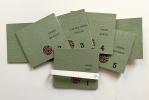
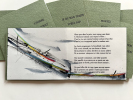
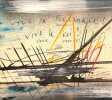
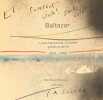


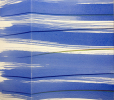



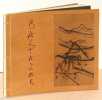



![Julius Shulman - Agenda vierge pour l'année 2000.. [PHOTOGRAPHIE - ARCHITECTURE] - SHULMAN (Julius).](https://static.livre-rare-book.com/pictures/AUR/6940_1_thumb.jpg)
![Julius Shulman - Agenda vierge pour l'année 2000.. [PHOTOGRAPHIE - ARCHITECTURE] - SHULMAN (Julius).](https://static.livre-rare-book.com/pictures/AUR/6940_2_thumb.jpg)

